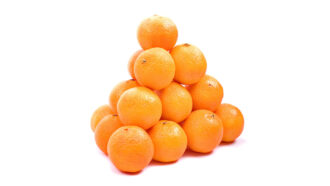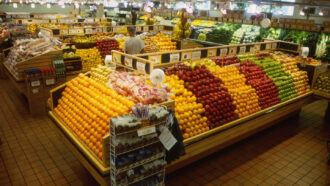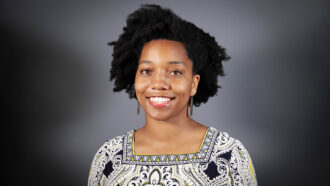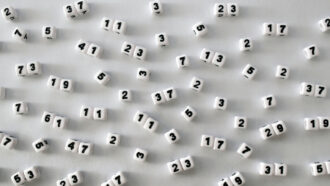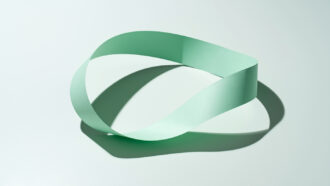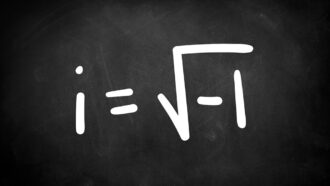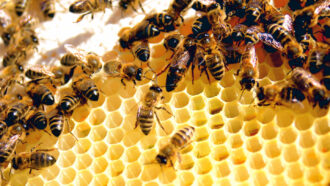Detecting True Art
Mathematics can help decide whether a painting is a forgery or a group effort.
By Emily Sohn
Real or fake? In the world of art, that can be an expensive question. Famous paintings by classic artists can sell for millions of dollars. To make a quick buck, people sometimes try to sell paintings that are imitations of the real thing. When the forgeries are done well, spotting them can be a major challenge, even for experts.
Now, researchers say they have found a new way to tell the real from the fake—using mathematics.
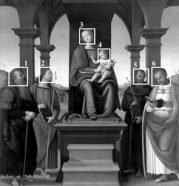 |
|
When researchers used math to analyze an old painting called “Virgin and Child with Saints,” they discovered that it was apparently painted by several different artists. The analysis suggested that areas 1, 2, and 3 were done by one painter and each of the other areas by another painter. |
| Proceedings of the National Academy of Sciences |
The researchers start with a digital image. They use a mathematical technique, known as wavelet decomposition, that breaks this image down into a collection of smaller, more-basic images.
This method is especially useful for analyzing textures. In a photograph, it can readily detect the difference between the smooth appearance of a blue sky and the ruffled surface of a grassy field, for example. In a painting, it can capture the texture of an artist’s brush strokes.
When an imitator tries to copy a master artist, his or her brush strokes would probably be different. “A master might have smooth, consistent strokes, say, while an imitator is jerky,” says Hany Farid, one of the researchers. Farid is a computer scientist at Dartmouth College in Hanover, N.H.
The researchers used wavelet decomposition and other statistical measures to analyze eight drawings by a 16th-century artist named Pieter Brueghel the Elder. They then compared the data obtained from these drawings with measurements of five imitations revealed to be false just 10 years ago.
The team found that the genuine Brueghel drawings all had similar patterns. By the same measure, the fakes were different from each other and from the true drawings.
The researchers also studied a painting called “Virgin and Child with Saints.” It was created near the beginning of the 16th century in the studio of the Italian artist Pietro Perugino. Their method suggested that at least four artists actually produced the painting.
Showing that the method works for two artists is not enough to conclude that it will work across the board. Still, art historians are optimistic. Mathematics may yet earn a place in an expert’s toolkit for detecting forgeries.—E. Sohn
Going Deeper:
Klarreich, Erica. 2004. Con artist: Scanning program can discern true art. Science News 166(Nov. 27):340. Available at http://www.sciencenews.org/articles/20041127/fob3.asp .
